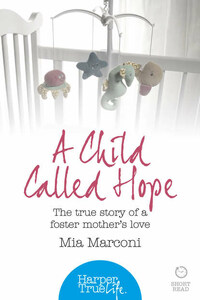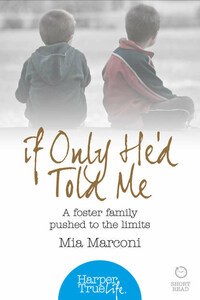It was a typical British day: rainy, black sky, lightning, with thunder claps so loud they made you jump. Janet and I didnât care; we were happy dancing away, singing at the tops of our voices while Star Wars played on a loop on the telly. Every so often Janet would sigh, âI love Luke Skywalker, Mia. I really love him,â or sheâd say, âMia. My Luke Skywalker, where is he?â And I would say, âHeâs up there with the stars, looking for you.â Then we would collapse, laughing, and carry on dancing.
I wondered what a passerby looking through the front window would make of me whirling a Downâs syndrome teenager round and round, both of us dancing inelegantly, giggling hysterically, while I tried to explain that Luke Skywalker only existed on the television screen. I was cheering her up, they would think, but the reverse was true. I know this sounds odd but Janet was a fantastic therapist to me, and came along just when I needed her.
I met Janet because she lived next door to us, with her lovely mum Lizzy and younger sister Emma. The first time I saw her I looked at her big, innocent smile and couldnât help but smile back. We hit it off straight away, which is unusual because Downâs syndrome children are quite fussy and only interact with certain people, but I did not dismiss her as so many other people did, and Janet picked up on that. The look of relief on Lizzyâs face when she realised her daughter was going to be accepted by us was a special moment.
âThank you,â she mouthed silently at me.
âJanet is lovely,â I mouthed silently back.
Emma was six, the same age as my youngest daughter Ruby, and although my eldest, Francesca, was seven, and Janet fifteen, because of her disability Janet was oblivious to the fact that she was twice their age and joined in with all their games. I would often find them happily playing with Barbies, getting them ready to go to balls and parties.
Our family â Martin, Francesca, Ruby and I â had only recently moved into the house next to Janet and her family, and I believed that fate had led us there. I felt as though we had found exactly the right house at exactly the right time, because our old home was full of sadness after the sudden death of our foster child Hope. I had cried so many tears in that house, I felt the only real way to exorcise the sadness was to leave.
I know itâs a funny thing to say about mere bricks and mortar, but the place we found was healing in a way I could never have predicted. Firstly, we had bought it from the local parish church, and the moment you walked through the door you were enveloped by a feeling of calm. It was like an invisible being wrapping their arms around you, whispering that everything was going to be okay. I felt safe, protected and secure for the first time in months. The irony was that after Hopeâs death I had craved the peace, tranquillity and silence of our local church, and now I got that same feeling in our new house.
It was in a quiet, tree-lined road with a large village-style green at the top. Priests had lived there and I was sure that was why its spiritual atmosphere was so strong. You could feel every prayer and every blessing that had ever been said there, as though all that love had been absorbed by the walls.
When I walked through the door that first time, I fell in love with it, totally oblivious to the amount of work that needed doing to make it habitable. The roof leaked and needed replacing; it would cost a fortune and had to be done fast, because when it rained out came the buckets. Me and the girls often slept in one room, giggling when we had to get up to empty them. Martin never saw the funny side â why would he? He had to do all the work â and slept next door where it was drier.
Martin looked at the bare walls and floorboards, and walked around muttering under his breath, âWhat have we done? It needs new everything, and we donât have the money to do it!â
I just smiled and said, âWe will. We will be able to make this our home, and I promise you, it will be a happy one.â
Iâd give him a big kiss, the girls would hug his legs, Jack and Jill (the dogs) would start licking his hand and heâd smile and walk off muttering again, pretending to be cross. As always, I was the optimist and Martin the pessimist. We were Yin and Yang, chalk and cheese, Tom and Jerry, and thatâs why we worked so well together.
We settled into a routine. Martin would spend all day driving his cab, then come home, have his dinner and start working on the house. I would take the girls to school, come home and start painting. After a few months we were making progress, the crumbling walls were replastered, the peeling paint was sanded down and our furniture was beginning to make it look homely.











